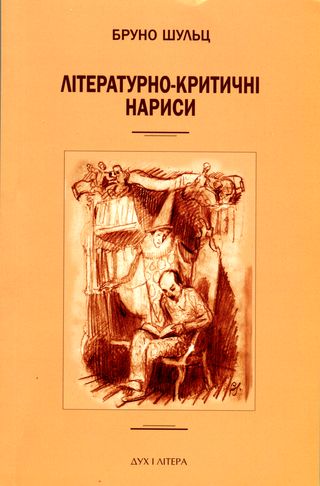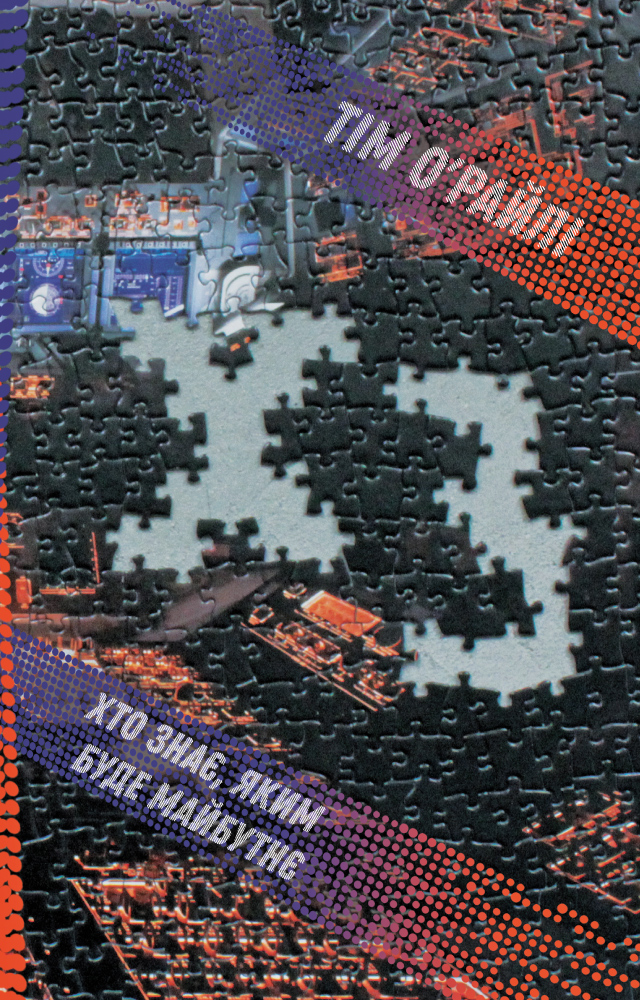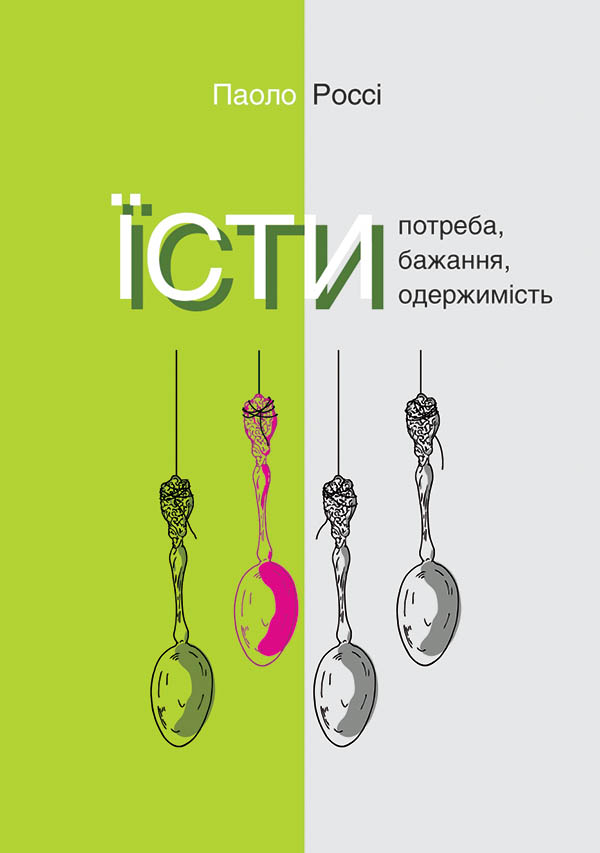Читати книгу - "Три сили. Як виховують в успішних спільнотах"
Шрифт:
Інтервал:
Добавити в закладку:
61 AviBeker, The Chosen: The History of an Idea and the Anatomy of an Obsession (New York: Palgrave Macmillan, 2008), p. 85 (цитата Бенджаміна Дізраелі).
62 Див. Roy F. Baumeister and John Tierney, Willpower: Rediscovering the Greatest Human Strength (New York: Penguin Press, 2011); Angela L. Duckworth, “The Signi. cance of Self-Control”, Proceedings of the National Academy of Sciences 108, no. 7 (2011), pp. 2639–40; Angela L. Duckworth, Christopher Peterson, Michael D. Matthews, & Dennis R. Kelly, “Grit: Perseverance and Passion for Long-Term Goals”, Journal of Personality and Social Psychology 92, no. 6 (2007), pp. 1087–1101; див. також Bob Sullivan and Hugh Thompson, The Plateau E. ect: Getting From Stuck to Success (New York: Dutton, 2013), pp. 68–74.
63 Див., наприклад, Louie, Compelled to Excel, pp. 47–8; Grace Wang, “Interlopers in the Realm of High Culture: ‘Music Moms’ and the Performance of Asian and Asian American Identities”, American Quarterly 61, no. 4 (December 2009), pp. 892, 894, 896; Purkayastha, Negotiating Ethnicity, p. 89; Maryam Daha, “Contextual Factors Contributing Ethnic Identity Development of Second-Generation Iranian American Adolescents”, Journal of Adolescent Research 26, no. 5 (2011), pp. 543, 560–1.
64 Див. Claudia L. Bushman, Contemporary Mormonism: Latter-day Saints in Modern America (Westport, CT, and London: Praeger, 2006), p. 64; Keith Parry, “The Mormon Missionary Companionship”, in Marie Cornwall, Tim B. Heaton, and Lawrence A. Young, eds.,Contemporary Mormonism: Social Science Perspectives (Chicago: University of Illinois Press, 1994), pp. 182, 183–85; Benedict, The Mormon Way of Doing Business, p. 65.
65 У нещодавньому дослідженні 37% американських студентів заявили про неконтрольоване споживання алкоголю. Lloyd D. Johnston, Patrick M. O’Malley, Jerald G. Bachman & John E. Schulenberg,Monitoring the Future: National Survey Results on Drug Use, 1975–2012, vol. 2 (Ann Arbor, MI: The University of Michigan Institute for Social Research, 2012), p. 27.
66 Daron Acemoglu & James A. Robinson, Why Nations Fail: The Origins of Power, Prosperity, and Poverty (New York: Crown, 2012). Див. Jared Diamond, Guns, Germs and Steel: The Fate of Human Societies (New York and London: W.W.
Norton and Company, 1999); Jared Diamond, “What Makes Countries Rich or Poor?” The New York Review of Books, June 7, 2012.
67 Див., наприклад, Bloom, Prodigal Sons, p. 17 (зазначено, що на початку ХХ століття в єврейських іммігрантських родинах «статки перетворилися на реальний показник успішності американського зразка»); Bandana Purkayastha, Negotiating Ethnicity: Second Generation South Asian Americans Traverse a Transnational World (Rutgers University Press, 2005), p. 91 (американці південноазійського походження «часто приділяють особливу увагу досягненням в обмеженій царині “білих комірців” у медичній, технологічній, юридичній та науковій галузях»); Mitra K. Shavarini,Educating Immigrants: Experiences of Second-Generation Iranians (New York: LBF Scholarly 2004), p. 148 (наголошено важливість як «символічного статусу», так і економічного становища для американців іранського походження); Maryam Daha, “Contextual Factors Contributing to Ethnic Identity Development of Second-Generation Iranian American Adolescents”, Journal of Adolescent Research 26, no. 5 (2011), pp. 560–1; Lisa Sun-Hee Park, “Ensuring Upward Mobility: Obligations of Children of Immigrant Entrepreneurs”, in Benson Tong ed., Asian American Children: A Historical Handbook Guide (Westport, CT: Greenwood Press, 2004), p. 126.
68 James Truslow Adams, “To ‘Be’ or To ‘Do’: A Note on American Education”, Forum LXXXI, no. 6 (June 1929), pp. 321, 325.
69 Див., наприклад, Zhou, Contemporary Chinese America, p. 195.
70 Див., наприклад, Thomas J. Sugrue, The Origins of the Urban Crisis: Race and Inequality in Post-War Detroit (Princeton: Princeton University Press, 1996), pp. 5–14; Dwight B. Billings and Kathleen M. Blee, The Road to Poverty: The Making of Wealth and Hardship in Appalachia (Cambridge: Cambridge University Press, 2000), pp. 8–24.
71 Celeste Kidd, Holly Palmeri & Richard N. Aslin, “Rational Snacking: Young children’s decision-making on the marshmallow task is moderated by beliefs about environmental reliability”, Cognition 126 (2013), pp. 109–14.
72 Див. Jon Butler,The Huguenots in America: A Refugee People in New World Society (Cambridge, MA: Harvard University Press, 1983), pp. 80–6, 96–100, 122–3, 132.
73 AlixaNa., “Lebanese Immigration into the United States: 1880 to the Present”, in Albert Hourani & Nadim Shehadi eds., The Lebanese in the World: A Century of Emigration (London: Centre for Lebanese Studies, 1992), pp. 159–60; Andrzej Kulczycki & Arun Peter Lobo, “Patterns, Determinants, and Implications of Intermarriage Among Arab Americans”, Journal of Marriage and Family, vol. 64, no. 1 (Feb. 2002), pp. 202–10.
74 Див., наприклад, Jerome Karabel, The Chosen: The Hidden History of Admission and Exclusion at Harvard, Yale, and Princeton (Boston and New York: Houghton Mi.in Company, 2005); Robert C. Christopher, Crashing the Gates: The De-WASPing of America’s Power Elite (New York: Simon & Schuster, 1989), pp. 17–18; Peter Schrag, The Decline of the WASP (New York: Simon & Schuster, 1970); Ronald W. Schatz, “The Barons of Middletown and the Decline of the North-Eastern Anglo-Protestant Elite”, Past & Present 19 (2013), pp. 165, 197–200; James D. Davidson et al., “Persistence and Change in the Protestant Establishment”, Social Forces 74, no. 1 (1995), pp. 157–75; Digby Baltzell, “The Protestant Establishment Revisited”,The American Scholar 45, no. 4 (1976), pp. 499–518.
75 Див., наприклад, Charles E. Silberman, A Certain People: American Jews and Their Lives Today (New York: Summit Books, 1985), p. 23 («американські євреї зараз живуть у вільнішому і відкритішому суспільстві, аніж будь-яка із діаспорних спільнот минулого»).
76 Див. Unz, “The Myth of American Meritocracy” (зазначено, що кількість єврейських призерів на олімпіаді з математики серед старшокласників впала з приблизно 40% у 1970-х до сучасного показника 2,5%).
77 Clay Davenport, “Baseball Prospectus Basics
Увага!
Сайт зберігає кукі вашого браузера. Ви зможете в будь-який момент зробити закладку та продовжити читання книги «Три сили. Як виховують в успішних спільнотах», після закриття браузера.




